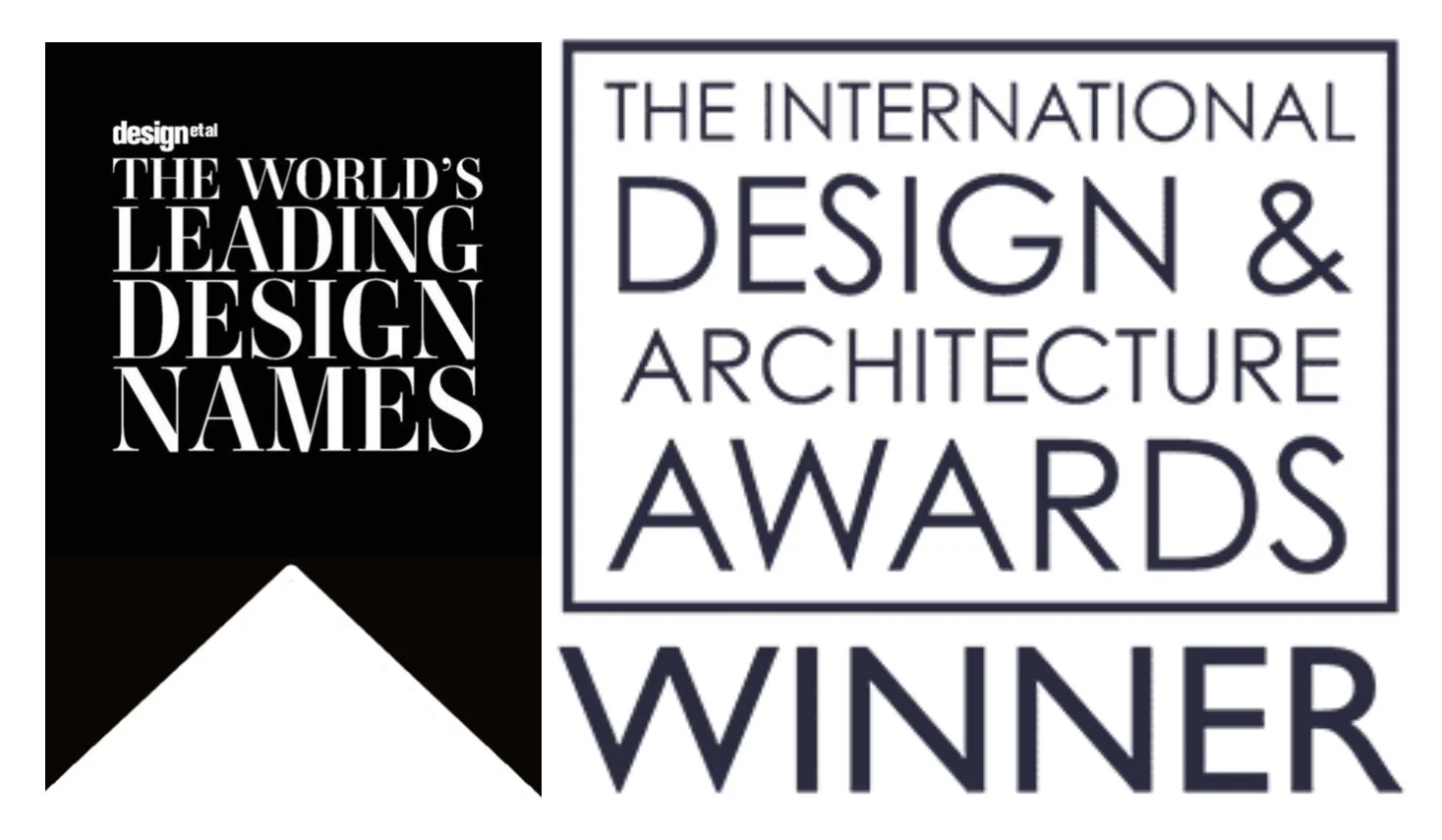When it comes to interior design fees, there is no set standard on hourly rates, let alone fee structures. Trying to understand the large gap in industry pricing can leave homeowners scratching their heads.
To try and shed some light on the matter, I’ve done a breakdown of the three most common Interior design fee Structures with the pros and cons to each.
Percentage Fee Structure:
Some designers charge by the hour with a rate ranging between $150 to $500 an hour. Other designers will charge a percentage rate for the total cost of a project, which is as low as 10% and but as high as 25%. The primary benefit of a percentage rate is that there is no fee upfront. However, some might argue the possible clash of ethics associated with this fee structure. When higher expenses equal higher profits for the designer, it Calls into question the motives of your interior designers' material selection when prices get a little higher.
When it comes to the hard cost of new construction, there are only slight variables in labor and building materials. Unfortunately, I can’t say the same about finishing material selection. Prices vary greatly, from one a chandelier can start as little as $1000 and go up to $50,000+ hardwood can cost as low as $5.00 a square foot or $30 a square foot for a European import. Countertops can range from $2000 a slab for something basic and can quickly go up to $6,000+ a slab for marble. As you can imagine, there are so many variables in the pricing of the finishing materials that can rapidly inflate your overall project cost.
You begin to wonder if the $30,000 chandelier was selected because it was the best design choice or if it’s because your designer wanted an additional bonus on the final bill. I don’t know about you, but I certainly wouldn’t feel at ease with a fee structure that had me questioning the vision or reason behind each large ticket item. Any fee structure that can blur the line of ethics is a dealbreaker for me. For contractors, a percentage fee makes sense because they’re not the ones sourcing your finishing material selection, which often equates to over 40% of the cost of a new build or renovation.
Pros:
You know the exact percentage of what your design fees will cost at the beginning of your project, with little to no design fee upfront.
Cons:
The possible clash of ethics can leave you with a rocky foundation of trust with your designer.
Percentage fees are often the most expensive out of all the fee structures.
It’s not uncommon for this fee structure to be in addition to an hourly design fee.
Hourly Fee Structure:
Similar to that of a layer, there is the classic flat hourly fee structure where a designer bills the entire project based on an hourly rate. The average price for a principal designer is around $250-$300, but the gap can range from $150-$500.
Often a designer who works on an hourly rate structure will require a retainer to begin work on your project. Pending on the scope of work, this can be anywhere between $2000-$10,000.
Some hourly designers will put together a proposal based on the overall scope of work with the estimate of the hours they feel will be required to complete your project and bill a retainer based on the total assessment. Other designers will charge a small retainer and bill on a bi-weekly or monthly basis.
Pros:
You know what your cost per hour will be, and for a client who requires small scopes of work, this can be a cost-effective way to work with a designer.
There are a LOT of pieces that go into designing a home from top to bottom, and more times than not, clients underestimate the time investment it takes to create a dream home.
You’re less likely to waste your designers' time with indecision and repeat questions when you know you’re paying for every second.
Con’s
What one interior designer may be able to do in a day, another designer may take a week to accomplish. With interior design being such a creative process, it’s hard to quantify time usage.
Unlike a lawyer who tracks their time on admin and research, designers' time investment is anything from emails, phone calls, drafting, site measures, fabric selection, vendor phone calls, order processing, presentation creation, and the list goes on and on.
This fee structure can quickly take the joy out of the design process. When clients feel like each minute in a design meeting is on the clock, it can add unnecessary tension to a project.
Flat Rate Fee Structure:
Sure there’s a little more work that has to go into a proposal at the beginning. A project has to be adequately assessed and a detailed scope of work established to quote a client accurately. This often involves a set amount of design meeting hours with a limitation on requested design revisions. Still, the actual hours that it takes to establish a full design concept would be all-inclusive in the package fee.
The beautiful thing about a flat rate fee structure is that you have an excellent understanding of your design investment before signing a design agreement. It is the one fee structure that has the most transparency without any possible conflict of ethics.
Pro’s
You know precisely what your design fees are going to cost at the very beginning
There is no conflict of ethics in billing. If your designer suggests a $5000 sofa or a $10,000 sofa, you don’t have to question their motives.
Con’s
Full flat rate design contacts often account for heavily padded amount hours for admin and project management hours to be included. Every client's needs vary significantly. To account for the number of design meetings, calls, emails, and overall hand holding it takes to see a project through from concept to completion, an actual flat-rate contract will error on the side of caution. As a result, it's not unusual for designers to overestimate the number of hours they think will be required to bring the project to completion to ensure their bottom line.
Then There are combination fee structures that some designers use. Some designers will charge an hourly rate plus a markup on all items purchased on their behalf, while other designers charge a flat rate for design concept with a percentage on items purchased for the project.
You know how I feel about percentage billing, and we already went over the pros and cons.
My preferred fee structure at CHCC Curated Home:
Flat Rate Design Fee With An Hourly Rate For Project Management.
Here’s why
I want the design journey to be an enjoyable one for our clients, and there's nothing that will ruin the dynamic of a larger project faster than hourly billing. I also don’t like the ethical conflict of making a percentage of our clients' purchases, so I’m not interested in percentage billing. The talent that our team brings to the table for our clients is the same whether our clients have a $100K budget or a million-dollar budget. My A-game remains the same regardless of a client's budget. If anything, working on a tight budget is more of a challenge. When I recommend a spendy chandelier or painting, it’s because I think it’s the perfect fit, not because there's any invested interest for me. I never want to have my designs put into question because of
So, when it comes to design concept and creation, I bill on a flat-rate fee.
Now, the only deviation that I’ve structured into our design fees at CHCC Curated Home is an hourly fee for project management.
Sure, I could technically include 50+ hours into a contract in the assumption that our clients will require a large number of calls, emails, and site coaching. Still, experience has taught me that there is a HUGE variance from client to client in how much coaching/ project management they will require. As such, I don’t think it’s fair to overbill the clients who don’t need a lot of hand-holding to compensate for the ones that do.
I've worked with clients building large custom homes that required only a few site meetings and a minimal amount of guidance to see their projects completed, and I've worked on smaller projects that required double the time investment. I can tell you from first-hand experience that the highest unexpected cost in a project is often a result of micromanagement and indecision. The more you can trust the team that you hired, the better your design and build journey will be.
Now that you have the inside scoop on interior design fee structures, I hope this gives you the insight you need to feel more confident in choosing the right designer and fee structure that resonates most with you.
If you’re an American, consider the benefits of working with a Canadian design firm. With strategically placed logistics teams across the US, we are able to offer exceptional digital design services with a white-glove approach. Upon request, we can also travel to meet your needs. Tax benefits also allow for maximizing budget equity in your home.
Give us a call at 604-564-0404, contact us online, or visit our boutique design store at 1637 W 3rd Ave, Vancouver.
Servicing clients across the globe.












